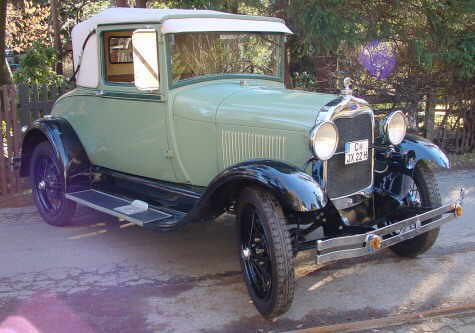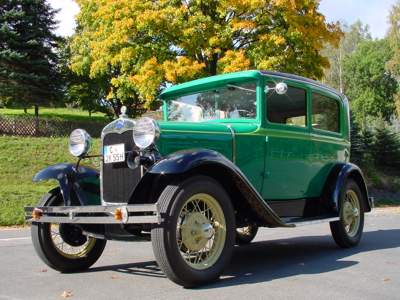Description
The Ford Model A, introduced in late 1927 as a 1928 model, was the long-awaited successor to the legendary Model T. By the mid-1920s, the Model T was becoming outdated, and Henry Ford reluctantly agreed that a more modern car was needed. The result was the Model A, a car that not only carried forward Ford’s philosophy of affordability but also brought significant advances in styling, comfort, and mechanical design.
The Model A was powered by a 201 cubic inch (3.3-liter) inline four-cylinder engine that produced 40 horsepower, a substantial improvement over the 20 horsepower of the Model T. This engine gave the car a top speed of about 55 mph, making it far more practical for the expanding road networks of the era. Unlike the T’s unusual pedal-operated planetary transmission, the Model A adopted a conventional three-speed sliding-gear manual transmission, making it easier for drivers familiar with other cars. It also featured mechanical brakes on all four wheels, a sturdier frame, and improved suspension, which made it safer and more comfortable than its predecessor.
In terms of styling, the Model A represented a complete departure from the upright, carriage-like look of the Model T. It had a lower, wider stance, a more elegant radiator grille, and flowing fenders that gave it a modern and stylish appearance. Customers could choose from a wide range of body styles, including the Tudor and Fordor Sedans, Coupe, Roadster, Phaeton, Pickup, and Station Wagon, as well as more specialized models. This variety allowed the Model A to appeal to families, farmers, professionals, and businesses alike. Ford also offered the car in a choice of colors, moving away from the single-color “any color as long as it’s black” approach that had characterized much of Model T production.
The Model A was also one of the first Fords to incorporate modern conveniences such as a safety glass windshield, a fuel gauge on the dashboard, and improved interior finishes. Priced affordably, with base models starting under $400, it reached a wide audience and quickly became a best-seller. Between 1927 and 1931, Ford produced nearly five million Model As, making it one of the most popular cars of its era.
By 1932, the Model A was replaced by the Ford Model B and the revolutionary V8-powered Model 18, but its impact was lasting. It marked Ford’s transition from the utilitarian simplicity of the Model T to a new age of cars that were not only practical but also stylish and comfortable.
Today, the Ford Model A is cherished by collectors and enthusiasts as one of the most iconic cars of the interwar period. Its blend of charm, usability, and historical importance has ensured that thousands survive in running condition, often seen at vintage car rallies and parades. It remains a symbol of how Ford once again reinvented affordable motoring for the modern age.

